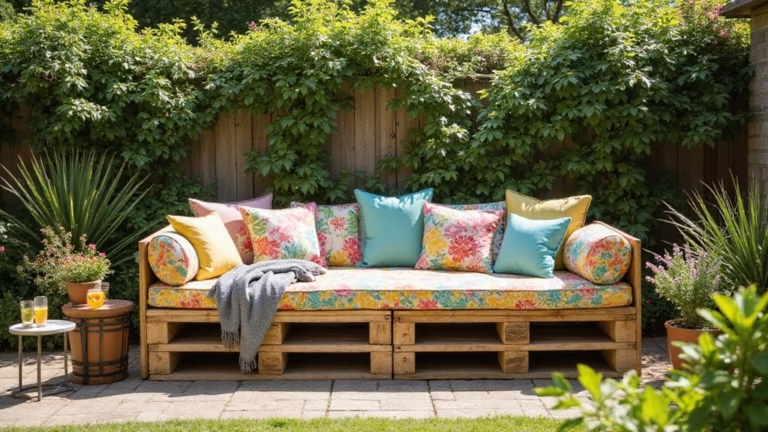Creating a backyard agility course for your active dog can transform your outdoor space into a fun playground.
Not only does it keep your furry friend physically active, but it also stimulates their mind.
Imagine your dog zooming through tunnels, jumping over hurdles, and weaving between cones, all while you cheer them on from the sidelines.
In this article, we’ll explore various DIY obstacles that you can easily make at home, ensuring your pup stays entertained and happy.
1. DIY Tunnel Fun

Tunnels are a great way to add excitement to your dog’s agility training.
They encourage your dog to run, crawl, and explore, making training sessions feel like an adventure.
Creating a tunnel can be as simple as using a collapsible children’s tunnel or making one from sturdy cardboard boxes.
For a more permanent solution, consider using PVC pipes to construct a tunnel frame that can be covered with a tarp.
This not only keeps the tunnel stable but also protects it from the elements.
When introducing your dog to the tunnel, use treats to coax them through the first time. Gradually increase the challenge by adding obstacles around the tunnel or having them enter and exit from different sides.
Tips: Make sure the tunnel is well-lit and free from sharp edges. Start with a short tunnel and gradually increase the length as your dog becomes more confident.
Unique Insight: Dogs love exploring new spaces, so make sure to change the tunnel’s position occasionally to keep their interest alive.
2. Jumping Hurdles

Jumping hurdles can be a thrilling addition to your backyard agility course.
You can create hurdles using PVC pipes or wooden planks.
Adjustable heights are ideal, allowing you to cater to your dog’s level of experience.
Start with a low height that your dog can easily clear, and gradually increase it as they gain confidence.
Incorporate commands such as ‘jump’ or ‘over’ to make training more interactive.
Using colorful tape or paint on the hurdles can make them visually appealing and can help your dog focus better during training sessions.
Make sure to use soft materials, especially for beginners, to prevent injuries.
Additionally, reward your pup with treats and praise every time they clear a hurdle, reinforcing positive behavior and making the experience enjoyable.
Unique Insight: Consider adding a fun twist by creating themed hurdles, like holiday decorations or seasonal colors to keep the course fresh and exciting.
3. Weave Poles for Coordination

Weaving is an excellent way to improve your dog’s coordination and agility.
DIY weave poles can be made from PVC pipes or even sturdy broomsticks.
Set them up in a straight line, spaced evenly apart to allow your dog to navigate through them with ease.
Start by guiding your dog through the poles on a leash, using treats to encourage them to weave left and right.
Once they get the hang of it, you can remove the leash and let them navigate the course independently.
To make it more challenging, try rearranging the poles into different patterns or angles.
Tips: Ensure the poles are securely anchored to prevent them from tipping over during use. Keep sessions short and fun to maintain your dog’s interest.
Unique Insight: Weave poles can also double as a fun game! Set up a small course and time your dog to see how quickly they can weave through the poles, rewarding them for their best times.
4. Balance Beams for Strength

Balance beams are perfect for building strength and confidence in your dog.
You can create a simple balance beam using a sturdy wooden plank placed on bricks or blocks to elevate it.
Start with a low beam, allowing your dog to practice walking across it without fear of falling.
Encourage them with treats and praise as they navigate the beam, gradually increasing the height as they gain confidence.
Make it more exciting by adding challenges, like walking backward or performing tricks on the beam.
Tips: Use a non-slip surface on the beam to prevent injuries. Make sure to supervise your dog during training sessions to ensure their safety.
Unique Insight: Incorporate balance beam challenges into a larger agility course, encouraging your dog to complete tasks at various heights.
5. Tire Jumps for Advanced Training

Tire jumps can add an exciting twist to your dog’s agility training.
Using an old tire, you can create a durable and fun jump that encourages your dog to leap into the air.
Ensure the tire is securely placed off the ground and supported on sturdy blocks.
Start by encouraging your dog to jump through the tire from a short distance, gradually increasing the distance as they gain confidence.
Always reward them with treats and praise for their efforts.
Tips: Make sure the tire is clean and free from sharp edges. You can paint the tire in bright colors to make it more visually appealing for your dog.
Unique Insight: Incorporate tire jumps into your agility routine, timing your dog to see how quickly they can clear the obstacle, turning training into a fun competition.
6. Agility Ladder for Footwork

An agility ladder is a fantastic tool for improving your dog’s footwork and speed.
You can create a simple version using ropes or tape laid out in a ladder shape on the ground.
Encourage your dog to step through the rungs, using treats to guide them along.
Start slowly, allowing them to become accustomed to the movement before increasing speed or adding commands.
Tips: Practice regularly, gradually increasing the difficulty by adding more rungs or varying the spacing between them.
Unique Insight: Use the agility ladder as a warm-up before training sessions, setting the pace for a high-energy workout.
7. Sandbox for Digging Delight

Every dog loves to dig, and creating a sandbox can help channel that energy in a positive way.
Choose a designated area in your backyard and fill it with sand or dirt.
Bury toys or treats in the sandbox to encourage your dog to dig them up.
This not only provides mental stimulation but also gives them a fun space to play.
Tips: Supervise your dog while they dig to avoid any accidents. You can also create a small fence around the sandbox to define the area.
Unique Insight: Use the sandbox as a reward area, allowing your dog to dig and explore after completing their agility course, reinforcing positive behavior.
8. Water Jump for a Splash of Fun
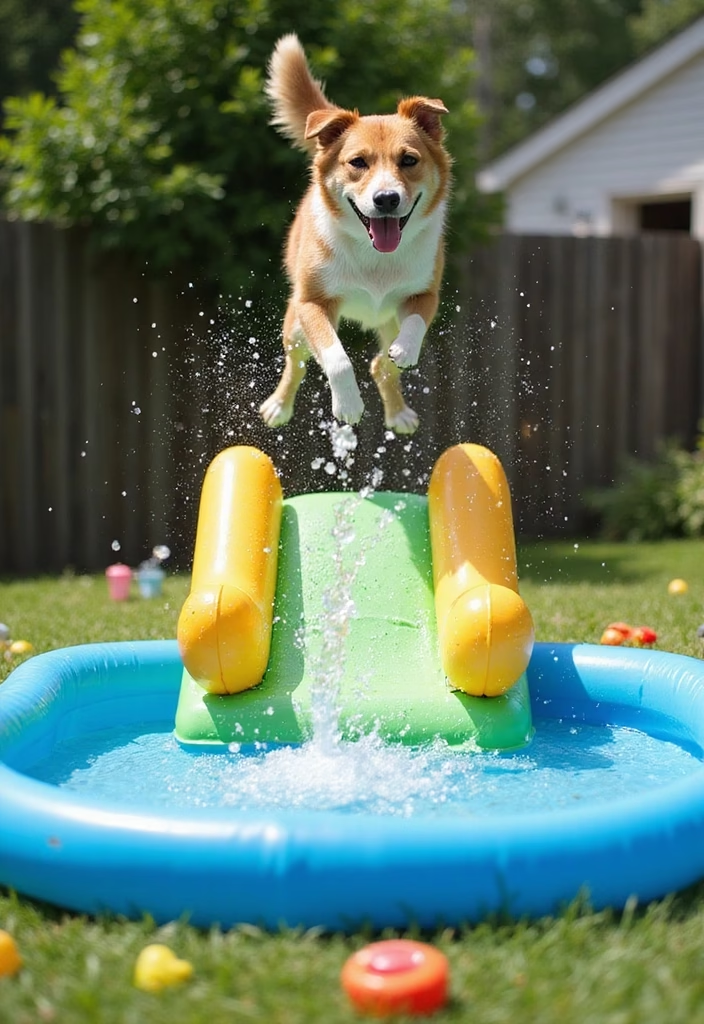
If your dog loves water, incorporating a water jump can elevate their agility training.
Create a simple jump that leads into a kiddie pool or a shallow area of a larger pool.
Encourage your dog to jump over the obstacle and into the water, using toys or treats as motivation.
This adds an exciting element to their routine, especially on hot days.
Tips: Start with a low jump to build confidence and gradually increase the height. Always supervise your dog around water to ensure safety.
Unique Insight: Use this opportunity to teach your dog water retrieval skills, combining agility with fun water play.
9. Tunnel of Love

Another fun twist on the traditional tunnel is creating a ‘Tunnel of Love’ with cozy blankets and cushions.
Set up a series of tunnels using lightweight fabric or blankets draped over chairs or low tables.
This makes for a soft and inviting space for your dog to explore and play.
Encourage them to crawl through, rewarding them with treats and praise.
Tips: Change the layout frequently to keep things interesting for your dog. This is also a great opportunity for younger dogs to build confidence in navigating new environments.
Unique Insight: Use themed decorations to make the tunnels festive for holidays or special occasions, turning training into a delightful event.
10. Fetch Zones for High Energy

Setting up designated fetch zones can enhance your dog’s agility training while keeping them active.
Create areas in your backyard with different fetch toys, ensuring they have plenty of space to run.
Use different toys like balls, frisbees, or ropes to keep things exciting.
Incorporate commands for your dog to learn, such as ‘fetch’ or ‘drop it,’ turning playtime into an opportunity for training.
Tips: Use bright and colorful toys to catch your dog’s attention and make them easily visible in the grass.
Unique Insight: Mix up the fetch zones by introducing new toys or obstacles, making each session feel fresh and thrilling.
11. Caution Course for Safety
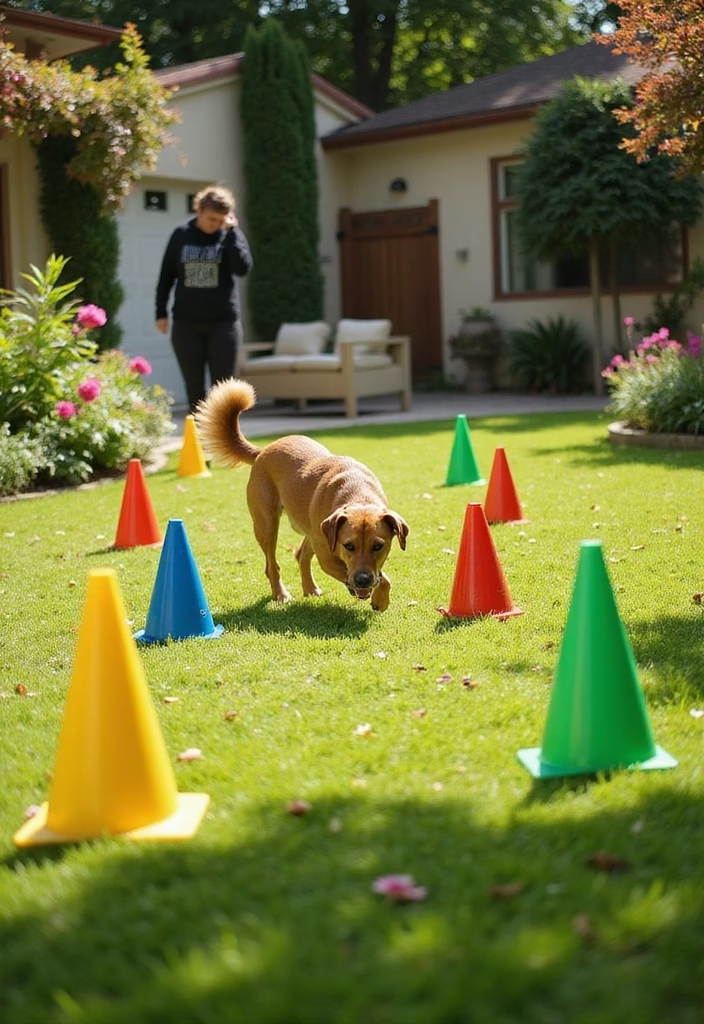
Safety should always be a priority when setting up your backyard agility course.
Create a caution course that teaches your dog to navigate safely around obstacles.
Use colorful cones or flags to mark areas where your dog should slow down or be cautious.
This helps them learn boundaries and develop a sense of awareness while navigating their course.
Tips: Use verbal commands like ‘slow’ or ‘careful’ to reinforce safe behavior.
Unique Insight: This can be a fun opportunity to teach your dog about their surroundings and the importance of being cautious while playing.
12. Interactive Games for Mental Stimulation

Incorporating interactive games into your agility course can boost your dog’s mental stimulation.
Set up stations where your dog can solve puzzles or find hidden treats.
These games can enhance their problem-solving skills while keeping them engaged.
Use dog-safe toys that require your dog to figure out how to get the treat out.
Tips: Rotate the games regularly to keep your dog interested and challenged.
Unique Insight: Combine physical agility training with mental puzzles to create a holistic experience for your dog, making training sessions both fun and rewarding.
13. Scent Work Stations

Scent work is a fantastic way to engage your dog’s natural instincts while providing mental stimulation.
Set up scent work stations in your backyard using treats or toys hidden in various spots.
Encourage your dog to use their nose to find the hidden treasures.
This not only keeps them entertained but also helps improve their focus and concentration.
Tips: Start with easy hiding spots and gradually increase the difficulty as your dog becomes more adept at scent work.
Unique Insight: Use this time to bond with your dog, encouraging them and celebrating their successes as they find each hidden item.
14. Obstacle Course Challenges

Creating obstacle course challenges can take your dog’s agility training to the next level.
Design a course that includes a mix of jumps, tunnels, and weave poles, encouraging your dog to navigate through it.
Set timers and challenge your dog to beat their own records, making it a fun competition.
Tips: Keep the course dynamic by changing the layout regularly, ensuring your dog stays engaged.
Unique Insight: Invite friends and their dogs over for a friendly competition, turning training into a social event that everyone can enjoy.
15. Reflective Training Space
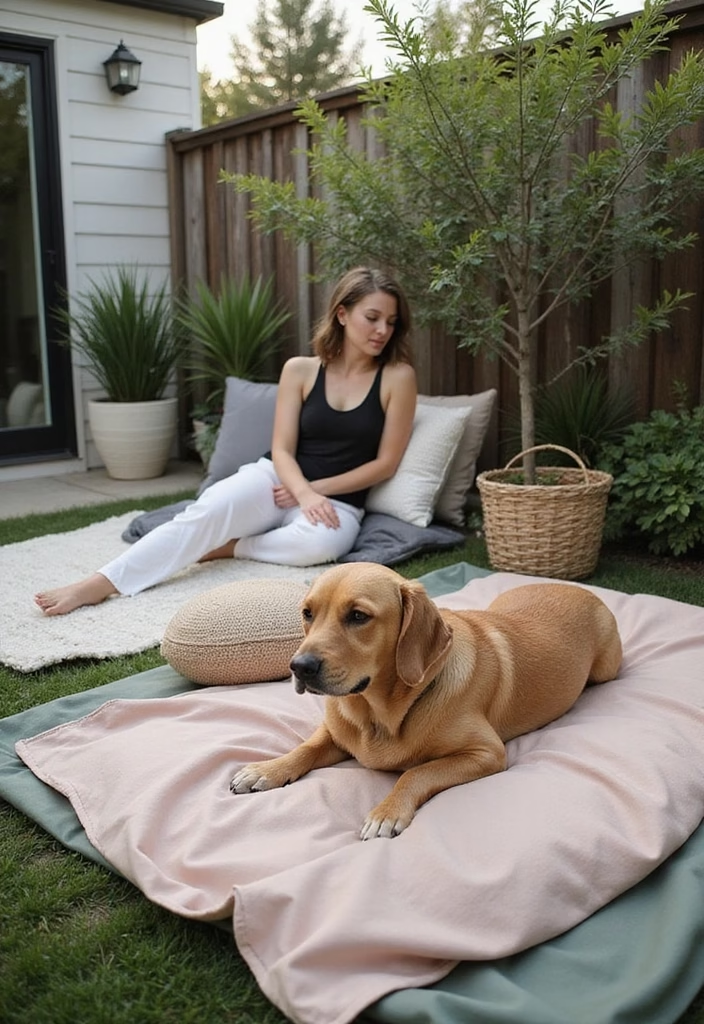
Creating a calm and reflective training space can enhance your dog’s focus during agility training.
Set up a quiet area in your backyard with minimal distractions, using soft colors and comfortable surfaces.
This space can serve as a retreat for your dog after rigorous training sessions, helping them relax and recharge.
Tips: Incorporate comfortable bedding or mats for your dog to rest on.
Unique Insight: Use this space to bond with your dog through gentle training or relaxation exercises, reinforcing their connection to you.
Conclusion
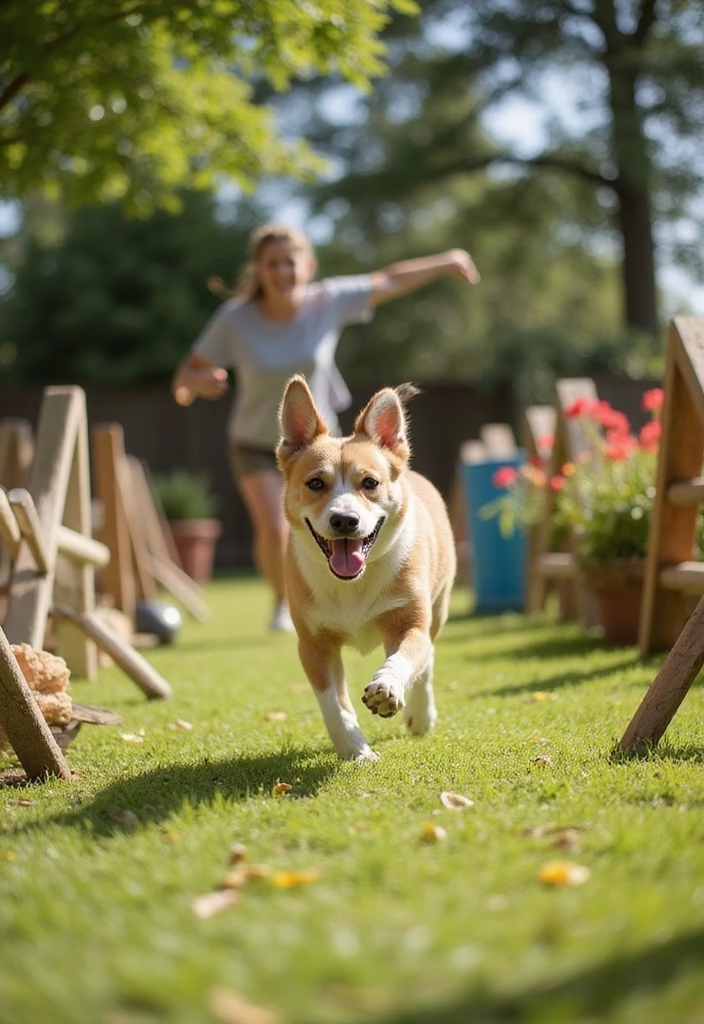
Building a backyard agility course is a wonderful way to keep your active dog engaged and happy.
With these DIY obstacles, you can create a fun and stimulating environment for your furry friend.
So gather your materials, get creative, and start building those agility courses that will not only challenge your dog but also strengthen your bond.
Happy training!




